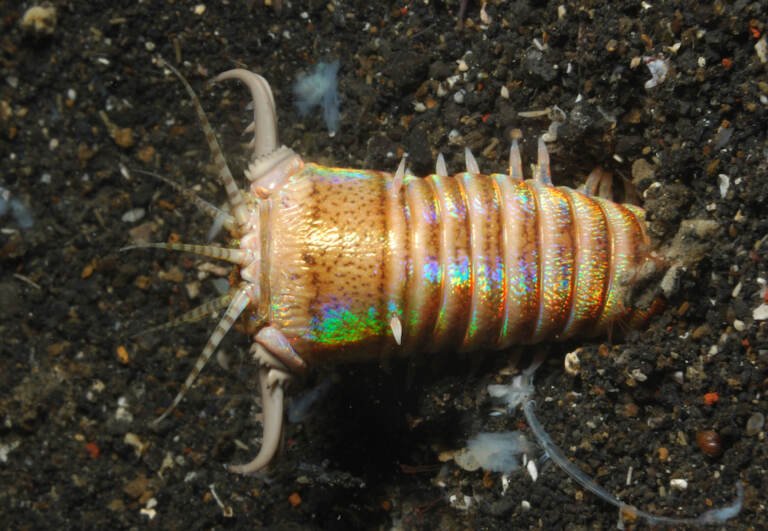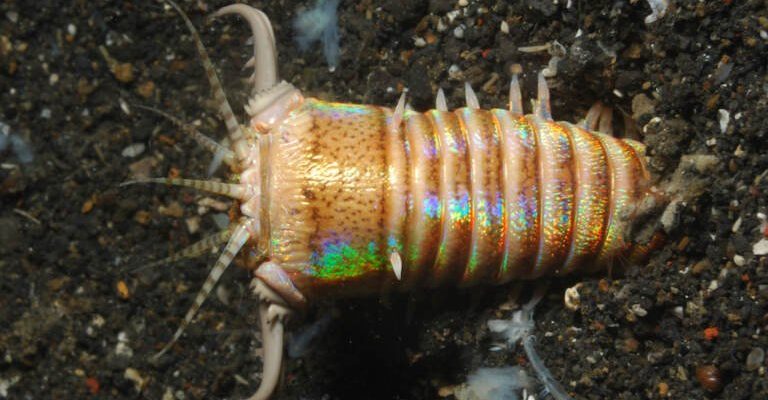
Let’s paint a picture of what the Bobbit worm is like. Think of it as nature’s version of a sci-fi monster. These worms have a fascinating anatomy and behavior, making them unique in the marine world. When they lose a part of their body, it’s not the end for them. They can actually grow back those segments. But how does that work? What does it mean for their survival? In this article, we’ll dive into the regeneration capabilities of Bobbit worms and explore why this is such a cool and important feature of their biology.
Understanding Bobbit Worms: A Quick Overview
Bobbit worms, scientifically known as *Eunice aphroditois*, can be found on coral reefs in warm waters worldwide. These worms can grow quite large, sometimes exceeding ten feet in length. But don’t let their size intimidate you; they play a crucial role in their ecosystem. By preying on small fish and other marine animals, they help maintain the balance of life underwater.
These worms live in burrows, which they dig into the sandy ocean floor. When it’s time to eat, they extend a part of their body, known as a “trap,” to catch unsuspecting prey. Once their meal is secured, they pull it back into their burrow. It’s a little like having a sneak attack system at play!
You might be wondering why we’re focusing on their regeneration abilities. Well, imagine being able to regrow your arm if you lost it. For Bobbit worms, losing a segment isn’t the end—it’s just a temporary setback.
How Does Regeneration Work in Bobbit Worms?
Regeneration is a fascinating biological process that allows an organism to replace lost body parts. In the case of Bobbit worms, when they lose a segment, the area where the loss occurred goes into a sort of healing mode. This is a complex process, involving a delicate interplay of cells and tissues that come together to create a new segment.
The fascinating part is that the worm doesn’t just regenerate in a haphazard way. The new segment is typically a perfect replica of the original, functioning just as well as before. The cells in the remaining segment work quickly to repair the damaged area, ensuring that the worm can continue to thrive.
In a way, you could think of it as nature’s version of a *reset* button. When part of their body is gone, they can quickly regroup and rebuild, ensuring they can continue their life as a successful predator.
Why Is Regeneration Important for Survival?
You might ask, “Why is this ability so crucial for Bobbit worms?” The answer lies in their predatory lifestyle. These worms inhabit environments where they can face threats from larger predators or can have accidents that lead to injury. By having the capacity to regenerate, they increase their chances of survival significantly.
Imagine being in a tough spot where something dangerous could munch on your body part! If you had the amazing ability to regrow it, you’d feel a lot safer, right? That’s exactly what Bobbit worms experience in their natural habitats.
Moreover, regeneration can serve as a defensive mechanism. If a predator tries to grab them and ends up with just a part of the worm, the Bobbit worm can still escape with its life and grow back what it’s lost. This resilience is a critical trait that helps them adapt to challenges in their environment.
The Regeneration Process: Step by Step
So, how exactly does this regeneration process unfold? Here’s a simple breakdown:
- Injury Occurs: The first step happens when a segment of the worm is lost due to injury or predation.
- Healing Phase: The remaining tissue around the injury starts to heal. This involves a rush of cells to the site to start the repair process.
- Cell Division: Specialized cells begin to divide, creating new tissues and structures to form the new segment.
- Maturation: Over time, the newly formed segment matures, becoming fully functional and ready for the worm to use.
Throughout this process, the worm often continues its normal activities while it regenerates. This is impressive, showcasing just how adaptable these creatures are. It’s like multitasking at its finest!
Comparing Bobbit Worms with Other Regenerating Species
The ability to regenerate isn’t unique to Bobbit worms. Many other species in the animal kingdom have similar abilities. For instance, *axolotls*, which are a type of salamander, can regrow limbs and even parts of their heart and brain. They serve as a fascinating comparison.
While both Bobbit worms and axolotls can regenerate, the mechanisms involved differ. Axolotls can regenerate a wider variety of body parts, while Bobbit worms focus primarily on segments. This leads to questions about genetics and biology that researchers are still exploring.
Additionally, some species of starfish can regenerate entire arms, making them another interesting comparison. The beauty of nature is in its variety, and understanding these differences helps us appreciate life’s complexity.
Impacts on Marine Ecosystems
Bobbit worms play a vital role in maintaining the health of marine ecosystems. By preying on smaller fish and other marine animals, they help regulate populations, ensuring no single species dominates the environment. This balance is essential for a thriving ocean ecosystem.
Moreover, their ability to regenerate means that even if they experience some losses, they can bounce back, continuing their important role. Think of them as the cleanup crew of the ocean floor, always working hard to help the system function properly.
But it’s not just about their predatory habits. Bobbit worms also contribute to the nutrient cycle in their habitats. As they burrow and move through the sand, they help aerate the sediment, which is crucial for other marine life living in those environments. It’s a perfect example of how one species can impact many others.
In wrapping up, the regeneration abilities of Bobbit worms highlight the wonders of nature. Their capacity to recover from injury and thrive is not just a survival mechanism but also a significant aspect of their role in marine ecosystems. Understanding these fascinating creatures invites us to appreciate the complexity of life that exists beneath the waves.
So, the next time you think about marine life, remember the Bobbit worm and its incredible ability to regenerate. It’s a small but mighty reminder of how resilient life can be, no matter the challenges it faces. Whether it’s through regeneration or adaptation, nature always finds a way to persevere.

